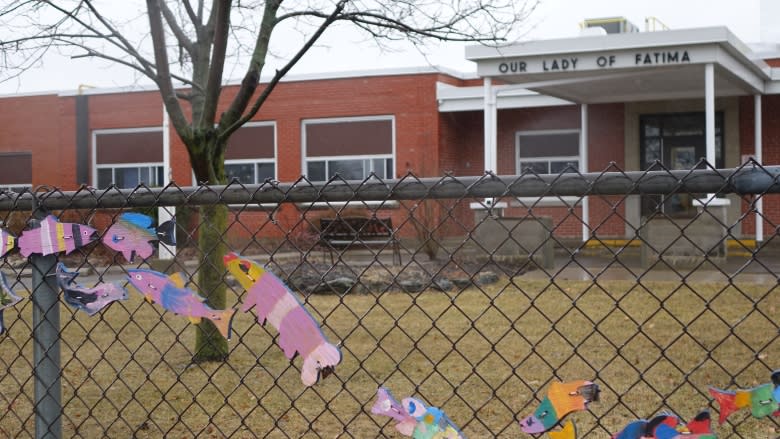Nortel's toxic legacy: Cleaning up former sites to cost millions
When Nortel Networks Corp. slipped under a dark cloud of bankruptcy protection in January 2009, concerns turned first to the people who'd lost money — former workers, pensioners and investors — and the financial catastrophe that would ensue.
But the company also left a legacy of environmental damage in the form of contaminated properties across Ontario, and taxpayers could end up paying to clean them up.
As the bankruptcy settlement process continues, Ontario's Ministry of Environment and Climate Change is seeking more than $100 million for the cleanup of former Nortel sites in Belleville, Brockville, Kingston and London, according to documents produced by the court-appointed monitor for Nortel.
"Predicting remediation risk management costs is difficult," said ministry spokesperson Gary Wheeler in an email to CBC. "It may fall upon the Ministry to carry out this work and incur the associated costs."
The Ontario government isn't the only creditor looking to recover money from Nortel's dwindling estate: There are currently more than $300 million in claims against the bankrupt company to clean up toxic sites.
Chemicals in soil, groundwater
For years, Nortel's sprawling manufacturing facilities in Belleville, Brockville, Kingston and London built electrical components used in telephones and circuit boards.
"There are all kinds of contaminants that were left," said Mark Mattson, an environmental lawyer with Waterkeeper for Lake Ontario. "Vinyl chloride and trichloroethylenes, these are the sort of things left over from degreasing products that they used a great deal at the [Nortel] plants."
Court documents obtained by CBC detail the hazardous substances that were used, including chlorinated solvents, volatile organic compounds (VOCs) and trichloroethylene.
Thanks to poor storage and disposal practices, some of these chemicals ended up in the soil and groundwater at the sites.
VOCs are linked to toxic effects on humans, from risks of cancer to neurotoxicity, according to Health Canada. Documents show heavy metals, hydrocarbons, PCBs, hexane, dioxane and other contaminants have also been found at some locations.
When chemicals like these seep into groundwater, they can migrate and create a toxic plume. That's what happened at the former Nortel plant in Belleville, a development that's troubling Mattson.
"I think it's really concerning that the toxic waste has moved off the Nortel property and under other properties including schools," he said
Toxic air at Belleville school
Our Lady of Fatima Catholic School sits beside the old Nortel manufacturing facility at 250 Sidney St. in Belleville, Ont.
The school gets its drinking water from the municipal water system. Nevertheless, the Algonquin and Lakeshore Catholic District School Board installed eight monitoring wells to test groundwater near the school starting as far back as 2001.
"Oftentimes we're told, like in the Nortel case, there's no risk because the contaminated water is not part of Belleville's drinking water supply," said Mattson. "But that contaminated water is also leaching into air and offing gasses."
In fact, last year routine tests did find low-level toxic gasses at the school. The school board said the levels were not dangerous, but they were high enough for board officials to take action.
Last June, the board told parents it had found "some exceedances when measured against the Ministry of Environment's most stringent standards for the volatile organic compound trichloroethylene."
Clearing the air
"When we found out about it, it was a little scary," parent and school council treasurer Stacey Ovenden wrote in an email. "I may be naive but I knew the school board would do what was best. I don't like that there was contamination."
Working with Nortel's consultants, the board struck a plan to install a subslab depressurization system to exhaust any soil vaporization from beneath the school through the building's roof, said Doug Campbell, controller of plant and planning services at the school board.
That involved moving the school's entire student population to another Belleville school for six months while the ventilation system was being installed.
While the Nortel estate footed the bill for some of the work, it still cost the school board $750,000. The board would not say how much of the cost Nortel covered.
The board is still seeking more than $63 million from the Nortel estate, and the toxic plume under the former Belleville site remains.
Contaminated sites across Canada
The former Nortel sites are just a few of close to 800 polluted properties in Ontario with the estimated liability for cleanup pegged at $1.8 billion, according to a recent auditor general's report.
These abandoned brownfields end up on the province's list when companies walk away or go bankrupt. The federal government has its own list.
The Federal Contaminated Sites Inventory details some 24,000 toxic sites, including deserted mines.
"Under Canadian law the polluter is supposed to pay, but if there is no polluter [because] they've gone then taxpayers have to pick up the bill for doing the cleanup," said Scott Vaughan, president of the International Institute for Sustainable Development and former federal commissioner of the environment.
"I wouldn't want my daughter in her school adjacent to a site that actually might be leaching or have contaminants that have a carcinogenic or human health effect," said Vaughan. "Environmental contaminants don't go away and the remediation costs are really expensive."
Toxic legacy
Darwin Hoskin, who spent his career at Nortel Networks in Belleville, would prefer to remember his former employer as a forward-thinking telephone innovator rather than a polluter.
At one point Nortel was the single-biggest employer in Belleville, with about 1,200 people employed at the factory. "It was a really big deal," remembers Hoskin, who spent 38 years working at the plant before being laid off, and who still lives just down the street from the property.
"Way back when they built this plant there wasn't environmental rules, and we know that all over Ontario," said Hoskin.
Like the school board, the City of Belleville is seeking tens of millions of dollars from the Nortel estate because it owns the Quinte Exhibition Raceway, adjacent to the former Nortel plant.
"The city hasn't paid for any cleanup yet," said Cameron Smith, Belleville's environmental projects manager. "It may have to in the future."
Ontario creditors seeking money from Nortel's estate for environmental cleanup:
- Ministry of Environment and Climate Change: $100 million.
- The City of Belleville: $70 million.
- Algonquin and Lakeshore Catholic District School Board: $62 million.
- Sidney Street Properties Corp., Belleville: $55 million.
- SCI Brockville Corp.: $28 million.






